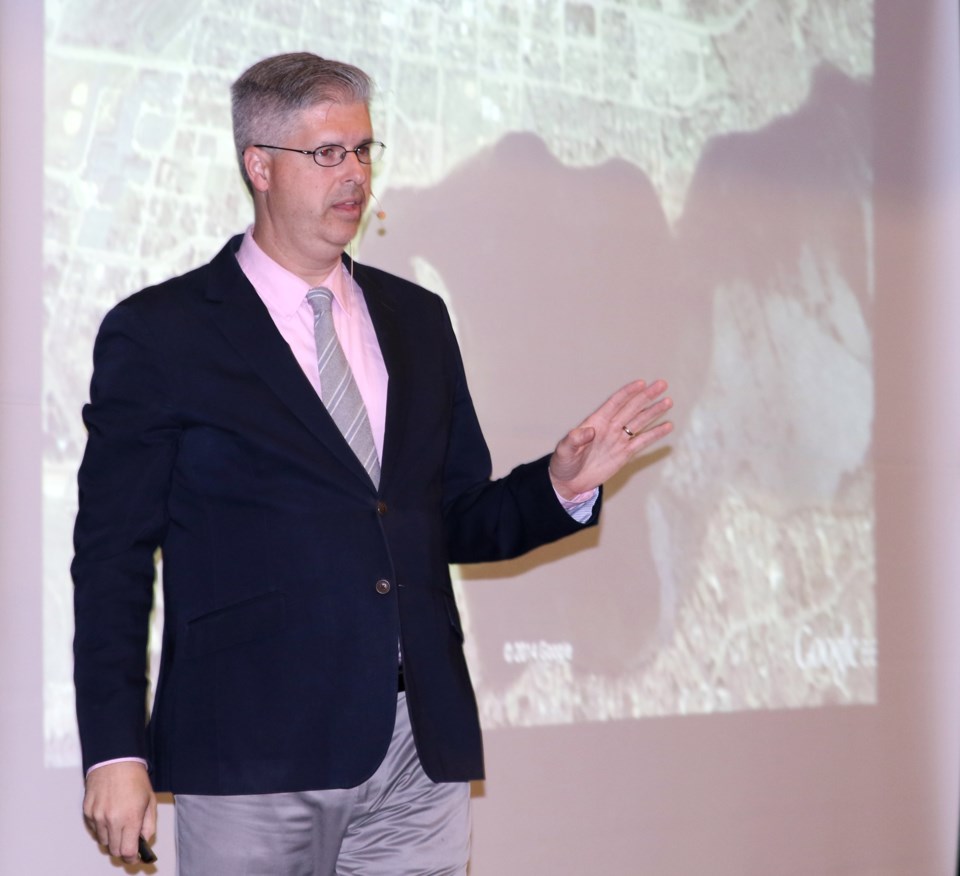THUNDER BAY – Charles Marohn has seen it all when it comes to North American cities and it all looks like sprawling concrete that’s so perfectly designed to drive around in that it’s no longer possible to travel any other way.
The president of Strong Towns sees a suburban experiment designed seven decades ago to prevent another economic depression with its road standards and building codes that spans to the horizon of the naked eye.
When Marohn walks on those driving roads, he sees huge physical gaps that the growth economy promised but never delivered. They’re promises that are coming home to roost, he believes, in the revenue challenges the continent’s municipalities are now facing.
“The problem is at a very local level, that growth forces us to take on these huge, unpayable liabilities and now those are all coming due,” Marohn told the annual EarthCare Thunder Bay open house on Tuesday night, where he was featured as the keynote speaker.
“Where’s the money to fix the road? Where’s the money to fix the pipes? It’s not in the tax base we created because the tax base we created is insufficient to do that. You wind up facing this unsolvable problem. We have to start a conversation about how you build places that are financially productive.”
Marohn pointed to a hollow Detroit as being further down the path that doesn't work, on which he believes most municipalities are traveling.
The “build-it-and-they-will-come” philosophy to development, he argued, is an “illusion of wealth;’ a high-risk, poor-return approach to urban planning that – even when it proves successful – thirsts so deeply for public subsidy that it will never produce a long-term return on investment.
From cul-de-sac suburban streets that serve a handful of families to burnt out commercial blocks that are hemorrhaging public spending, Marohn believes municipalities need to focus on increasing density to decrease expenditures.
Over his two days meeting with municipal officials in Thunder Bay, he saw a number of people struggling to cross streets to access businesses due to vehicle traffic. It was a matter he considered an economic inefficiency.
The key to successful municipal investment, he advised, is simplicity.
“Is Thunder Bay doing a terrible job? No, in comparison to everyone else. Are you leading the pack? No. (laughs). Not by a long ways,” Marohn said.
“There are a lot of very simple things that are not being done today that if we just went out and looked around, are obvious. I saw many places where there’s a sidewalk on one side of the street and not on the other, yet when you look at the other side of the street, there’s a path worn though the ditch.”
Sidewalks and trees might not look like investments that produce growth but Marohn argued the investments they make in quality of life and economic growth in high-dense areas of greater value produce the return on investment.
“When you humble yourself to actually look at those kinds of things and address those needs day after day, what you find is you make financially really high-returning investments and you improve people’s lives in the process – and that’s what public policy should be all about.”
